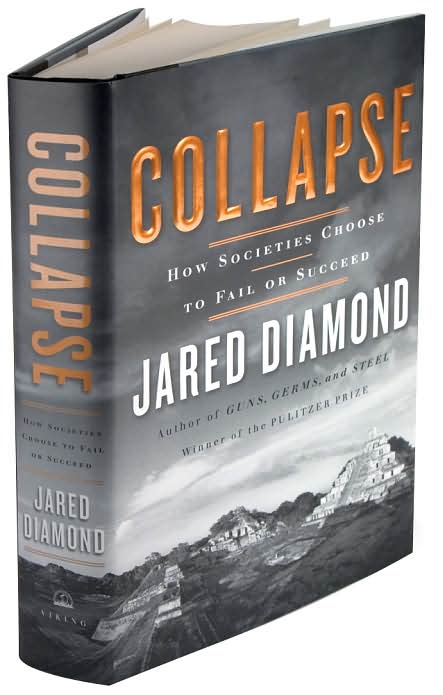 to happen, but our ability to bring things about is limited. The world is an infinitely complicated place. In fact, as if matters weren't already confusing enough, string theory and quantum physics is positing that ours may be but one of an infinite number of universes including a full-blow version that may be a bubble tangential to the one we are in right this moment!
to happen, but our ability to bring things about is limited. The world is an infinitely complicated place. In fact, as if matters weren't already confusing enough, string theory and quantum physics is positing that ours may be but one of an infinite number of universes including a full-blow version that may be a bubble tangential to the one we are in right this moment! Structural Dynamics is an approach to considering the future that doesn't claim to know what's coming but can help us identify what we need to be thinking about. It does this by identifying critical uncertainties that could go in any direction, and, by doing so, set the future on a course.
A critical uncertainty is something that is very important, but whose direction is not clear. As this Escher print of Night and Day demonstrates, where things are headed is dynamic: the same set of factors and forces can interact toward starkly different, even if related
 and symmetrical, outcomes. In our work, we look for forces that everyone sees as fundamental to the well-being of their organization or to the situation of interest but around which there is a lot of disagreement or confusion.
and symmetrical, outcomes. In our work, we look for forces that everyone sees as fundamental to the well-being of their organization or to the situation of interest but around which there is a lot of disagreement or confusion. Through a process that involves scanning, discussion and voting, each organization arrives at its own conclusions regarding its particular critical uncertainties. We would expect the uncertainties of the utility industry to be different than those faced by a professional nursing association, for example (although we have found commonalities in exploring the question!).
Ron Heifetz and others have pointed out the powerful learning opportunities that come from probing the thinking and worldviews of people, groups and institutions who hold strong conflicting views and, yet, have a degree of respect for each other. The process that leads up to the identification of critical uncertainty legitimates these diverse perspectives, so it is an excellent way for leaders to facilitate strategic conversations that generate organizational and social movement.
Typically, an organization or a community will confront a number of these critical uncertainties simultaneously. Discovering them and exploring their interactions is a way of developing very rich scenarios of possible futures. This allows the building powerful organizational and community strategies. Critical uncertainties are like fulcrums, and the organization that sees where the leverage points are is in a position to take advantage of its insight and foresight to attract and hold the key talent it needs to thrive in whatever future unfolds.
There are a number of macro critical uncertainties that all human systems face, and knowing what these are is a way of considering the dynamics of the world system as a whole. Much hangs in the balance on the spinning of these particular wheels.
Here are some that we've been thinking about:
- The rights and power of women worldwide
- The impact of climate change
- The mix of public and private power
- The internationalization of law
- The level and type of educational achievement
- The city as a strategic entity
- The reliability of food and water supply
- The availability of raw materials
- The introduction of robotics and artificial intelligence into everyday living
Let's explore a couple of these briefly to see why they qualify as critical uncertainties out book:
The power and rights of women: Many educated people in the
 West assume that women's rights are expanding in an inexorable fashion. Women are serving at virtually every level of government, e.g., Chancellor Merkel in Germany and Hillary Clinton as the US Secretary of State. Academic achievement by women is outpacing men in a number of countries, including the United States and Algeria. Female athletes are setting strength and endurance records and entering sports that were once off-limits. The list of these sorts of achievements is very long. Women seem unstoppable!
West assume that women's rights are expanding in an inexorable fashion. Women are serving at virtually every level of government, e.g., Chancellor Merkel in Germany and Hillary Clinton as the US Secretary of State. Academic achievement by women is outpacing men in a number of countries, including the United States and Algeria. Female athletes are setting strength and endurance records and entering sports that were once off-limits. The list of these sorts of achievements is very long. Women seem unstoppable!However, the forces opposing the equality and power of women start at birth. Multiple studies demonstrate that the preference for male children is virtually universal. In India, a special "ladies train" has been created for women administrative workers to provide them with protection from the harassment they experience when commuting with male passengers, but men still get on the women's train and berate them. In
 Iran, Guinea, and countless other societies, women are the particular target of angry men working to maintain the power of established governments, which frequently lace their ideology with religious doctrine that specifies a subservient position to women in the social and family order. Orthodox Jews yell at women seeking to pray at the Wailing Wall and throw things at them; Southern Baptists assert that women must submit to their husbands. Catholicism remains adamant in the view that women cannot and will not serve as priests.
Iran, Guinea, and countless other societies, women are the particular target of angry men working to maintain the power of established governments, which frequently lace their ideology with religious doctrine that specifies a subservient position to women in the social and family order. Orthodox Jews yell at women seeking to pray at the Wailing Wall and throw things at them; Southern Baptists assert that women must submit to their husbands. Catholicism remains adamant in the view that women cannot and will not serve as priests.Seen from the perspective of these data, the expansion of women's rights do not appear to be guaranteed in any respect. In fact, a female colleague of ours wonders if the last decade hasn't seen the zenith of the power of women, and whether ten years from now we might not see a much more rigid set of conditions than we do at present. Misogyny and traditional views on the role of women are alive and very well, thank you!
So, there is a powerful dynamic tension between these expansive and contracting forces. Whatever way the story works out, the condition of women's right is and will have incredible impact on all work organizations. How a particular organization positions itself vis-a-vis this tectonic tension and how it makes its stance clear will have a major impact on its attractiveness to women and the role that women will play in shaping its future.
The city as a strategic entity: While we haven't seen him in a long time, Jeb
 Brugmann is a deeply respected colleague and a friend. His Urban Revolution is a recent contribution that builds upon his decades as a global citizen, describing a range of solutions to help local communities access the benefits of globalization, and to help global organizations engage in local communities and markets. Jeb lays out the success of a number of "strategic cities," including Barcelona, Chicago, and Curitiba, Brazil, in galvanizing the true and stable elites of a city--not necessarily its most well-to-do, but the people who constitute the metropolitan areas local leadership and community networks--to develop and implement innovations that put those places out front while other cities founder.
Brugmann is a deeply respected colleague and a friend. His Urban Revolution is a recent contribution that builds upon his decades as a global citizen, describing a range of solutions to help local communities access the benefits of globalization, and to help global organizations engage in local communities and markets. Jeb lays out the success of a number of "strategic cities," including Barcelona, Chicago, and Curitiba, Brazil, in galvanizing the true and stable elites of a city--not necessarily its most well-to-do, but the people who constitute the metropolitan areas local leadership and community networks--to develop and implement innovations that put those places out front while other cities founder.In other words, Jeb is a member of the professional urban planning and development community, which has long sought to influence cities to be rational entities pursuing the best interests of a maximal number of its citizens. And, of late, very powerful technologies, such as the Smarter Cities initiatives at IBM, are being brought to bear on the conditions of large metropolitan areas in ways that seem to be full of hope for improvement in the functioning of urban life. When one sees crime in New York City falling to levels not seen in forty years, there is reason to believe that the quality of urban life might be moving toward a positive tipping point.
 On the other hand, the problem with this strategic orientation is that cities are continuously rent asunder by a phenomenal range of forces that can make them absolutely hellish places to live. Overcrowding, poor infrastructure, inadequate resources, crime, lack of housing, social/political/ethnic hierarchies and tradition, pollution, suspicion, architectural and topographical barriers to communication and interaction, etc. all make cities places where people look out for themselves and their own.
On the other hand, the problem with this strategic orientation is that cities are continuously rent asunder by a phenomenal range of forces that can make them absolutely hellish places to live. Overcrowding, poor infrastructure, inadequate resources, crime, lack of housing, social/political/ethnic hierarchies and tradition, pollution, suspicion, architectural and topographical barriers to communication and interaction, etc. all make cities places where people look out for themselves and their own.According the United Nations, 60+% of the world's population is now living in cities, including 19 cities with more than 10,000,000 inhabitants. Furthermore, the UN asserts that 100% of the world's population is linked in to urban life, so that's about as critical as any critical uncertainty is going to get! The status of cities is key to the life-sustaining quality of the millions of organizations that reside within them and depend upon them.
So, what is going to happen with cities? Again, the crystal is murky: Global interconnectivity, the press of common problems and an onslaught of new thinking could usher in a new, much more strategically-focused era; on the other hand, long-standing animosities, the sheer weight of a seemingly endless number of problems, the press of other concerns could take the city deeper into the pit of dysfunctionality. The future of cities is very important, but it's absolutely not predetermined.
We believe that this kind of analysis could be applied to each of nine domains listed above (and probably more). The organization and the leaders who are seeing and using "big picture" forces such as these to build their strategy, in general, and their work environment strategies, in particular, will be way out in front of those who assume that tomorrow will be like yesterday or that whatever comes along will be manageable through the existing repertoire of behaviors and mental models.

 National Aeronautics and Space Administration (NASA). Somewhere in the neighborhood of
National Aeronautics and Space Administration (NASA). Somewhere in the neighborhood of 














_Sacred_Geometry.svg.png)





















